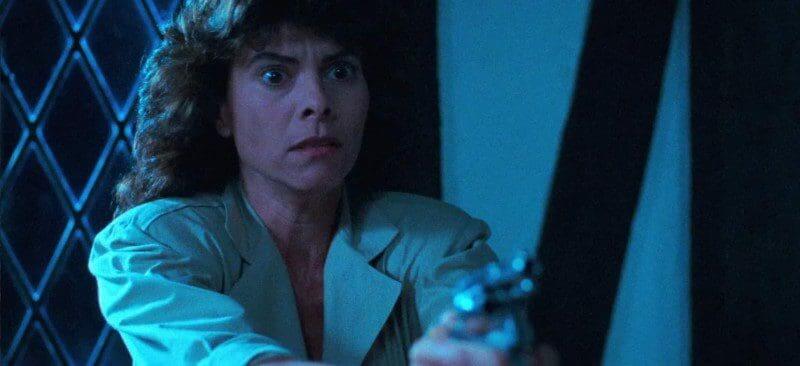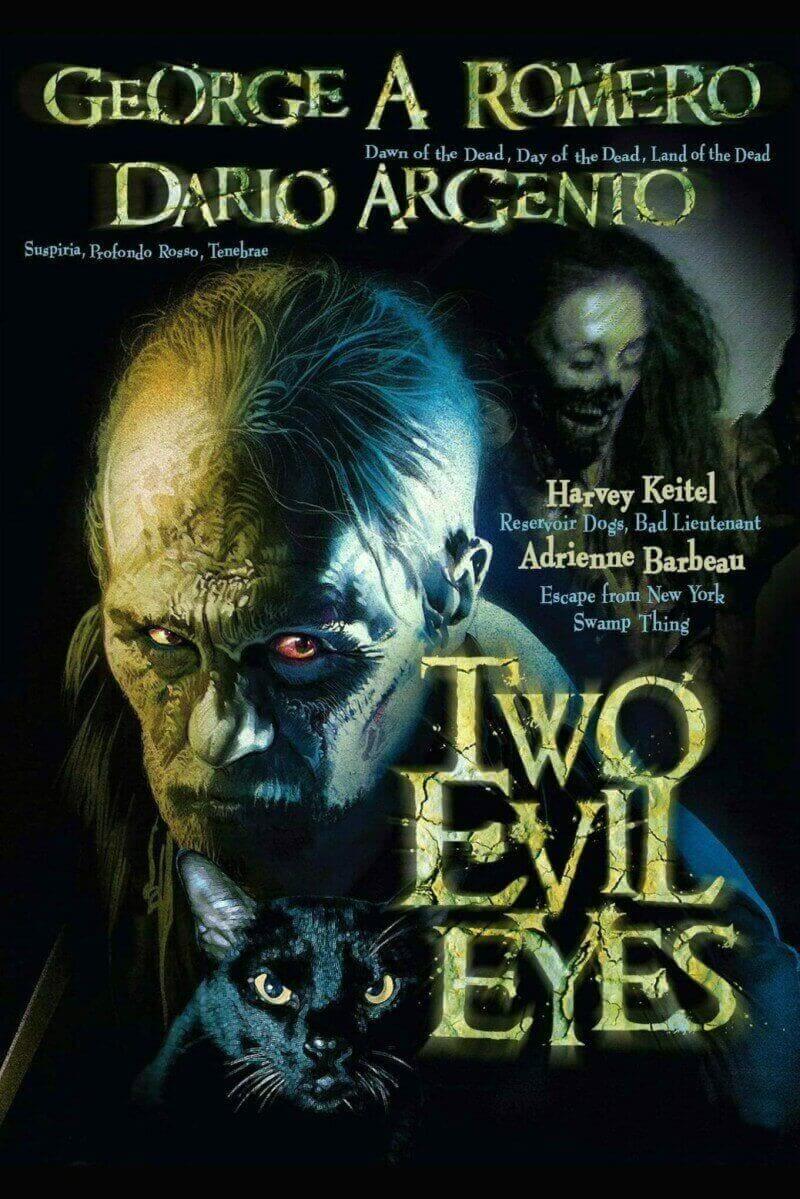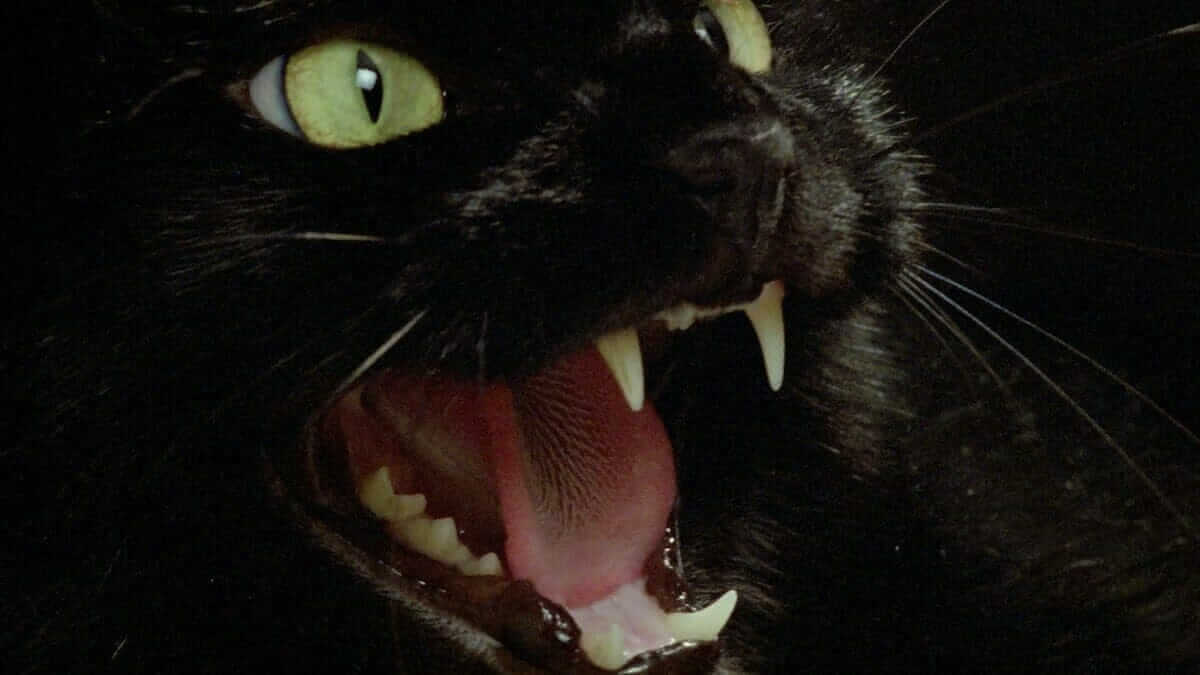Nothing says “let’s celebrate Halloween” more than watching a film based on spooky tales by master of horror, Edgar Allan Poe. The film adaptations of his work have always brought a level of comfort and that is no exception with the Italian anthology horror film, Two Evil Eyes. Directed by George A. Romero and Dario Argento, Two Evil Eyes divulges two macabre tales The Facts in the Case of Mr Valdemar and The Black Cat. Both of the stories adapted into this film are at times very different from the source material. However, the directors have firmly placed their mark on these stories, and when it comes to Poe’s work, it creates a unique viewing experience.
Our first spooky tale is The Facts in the Case of Mr Valdemar and it’s very clear that one’s own guilt is a theme that is sewn into this horror piece. Jessica Valdemar (Adrienne Barbeau) is getting ready to liquidate her dying husband’s assets into cash. His lawyer Steven Pike (E.G. Marshall), is extremely sceptical about all of this, however he concedes to the apparent wishes of Ernest.
“Romero and Argento did something unique with Two Evil Eyes“
Pike warns Jessica if Ernest (Bingo O’Malley) should die in the three-week waiting period for the transfer of his estate, he will contact the authorities. Now this is where the fun begins. Ernest dies. What should one do when they need to pretend someone is alive for several weeks? Put them in a large freezer in the basement, of course! Naturally, that sounds like a great idea, until Jessica and her lover Dr Robert Hoffman (Ramy Zada) can hear a lot of eerie moaning sounds coming from the very basement that the freezer is in. From that moment on, all bets are off and you are in for a morbid third act.
What works so well in this segment is the way that guilt plays into the character’s conscience. In the beginning, we see Jessica as a heartless gold-digger, and you really dislike her and her intentions. Yet even before Ernest dies, you can see she genuinely knows what she and her lover are doing is not right. There are moments, and they are so subtle, but you can see that Jessica is fighting with that conscience. We notice it even more when she hears the moans coming from the freezer. The theme of guilt works so well in horror because it can take us to a place in our sub-conscious and really work us over emotionally and psychologically. If you combine that with a story of terror, it can add weight and more depth to the overall viewing experience.

This isn’t Romero’s usual directorial style. We are used to seeing films such as Night of the Living Dead or Dawn of the Dead, but in comparison, this production is very pulled-back. You could almost compare it to Creepshow if you took away the colour palette and the EC Horror Comic Book inspiration. The reason being, the film is similar in the way they teach subtle lessons through the lens of horror. It’s just missing that fun factor because this story is not meant to be fun. As we all know, Romero has a fascination with the undead in a lot of his films, and that is extremely apparent in this one. However, this doesn’t focus on blood and guts, it’s more psychological. And it works.
Argento is up next with his descent into madness with The Black Cat. Crime scene photographer Rod Usher (Harvey Keitel) encounters a black cat in his darkroom, that his live-in girlfriend Annabel (Madeleine Potter) has adopted. Rod has a large amount of animosity towards the cat, and it becomes worse, the more Annabel fusses over it. As the film progresses, we see Rod becoming more detached and unhinged. And nothing cements that more than doing a photoshoot where he strangles the cat on camera, and uses it for his published photography book. From that moment on, the relationship between Rod and Annabel goes from bad to worse.

The casting of Harvey Keitel as Rod Usher, is pure genius. Keitel has an impressive resume and a vast amount of character range in his repertoire. His performance of Usher descending into the twisted spiral of murderous instability and mixing that with being monomaniacal brings the story to a different level of wickedness and devilry. There are subtle moments in his performance where you can see his character’s empathy switch off and it is so unsettling and terrifying to watch.
Similar to Romero, Argento has his stamp on the project, but it’s very stripped-back. We are used to seeing extravagant colour, violent deaths, and a phantasmagorical haze washing over the film. However, The Black Cat is still giving its audience terror, but it is a lot more grounded. A film can be just as terrifying when it doesn’t have all the bells and whistles. Sometimes all a film needs is a strong story being executed in a way that it needs to be, by a talented director. Nothing more, nothing less.
“[Romero and Argento] took the blueprint of Poe’s stories and told them through a more nightmarish and twisted lens.”
As an audience, we were so used to seeing adaptations of Poe’s work that would star the charming yet creepy Vincent Price. While they are still so well-loved even to this day, Romero and Argento did something unique. If they had gone down the same route as their predecessors and made the film into a gothic horror, I am not so sure how the film would have landed with modern audiences at that time. Two Evil Eyes is more than just an Italian anthology horror film. It’s a film where you understand the importance and weight of each story. Nothing good comes from the climax of each of these tales. This is why Romero and Argento were the perfect directors to be at the helm of Two Evil Eyes. They took the blueprint of Poe’s stories and told them through a more nightmarish and twisted lens.
Have you experienced George A. Romero & Dario Argento’s Two Evil Eyes? What’s your favorite Edgar Allan Poe adaptation? Share your thoughts with us over on Twitter or in the Nightmare on Film Street Discord! Not a social media fan? Get more horror delivered straight to your inbox by joining the Neighbourhood Watch Newsletter.
And don’t forget to enter the #31DayHorrorChallenge giveaway HERE.










